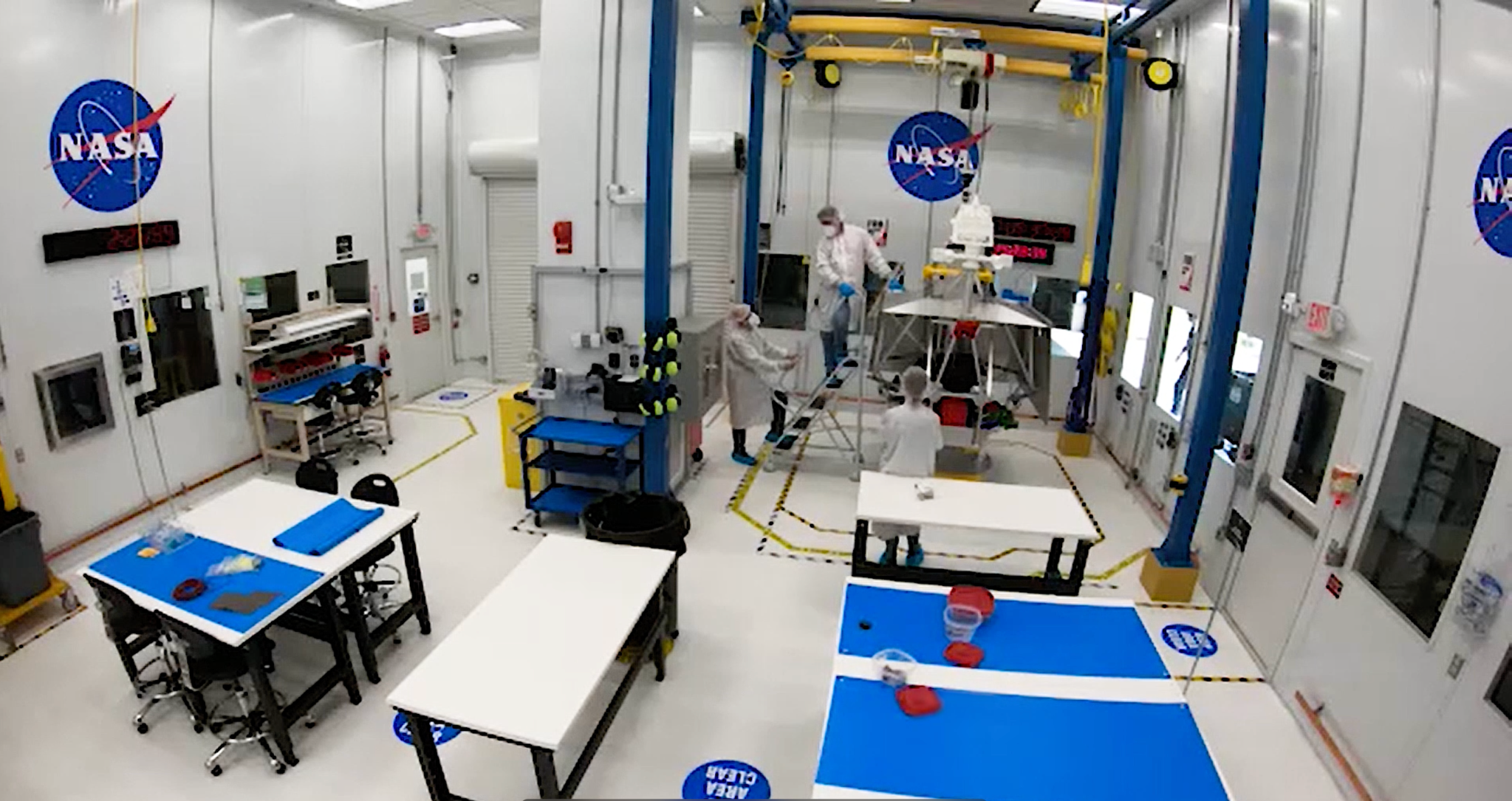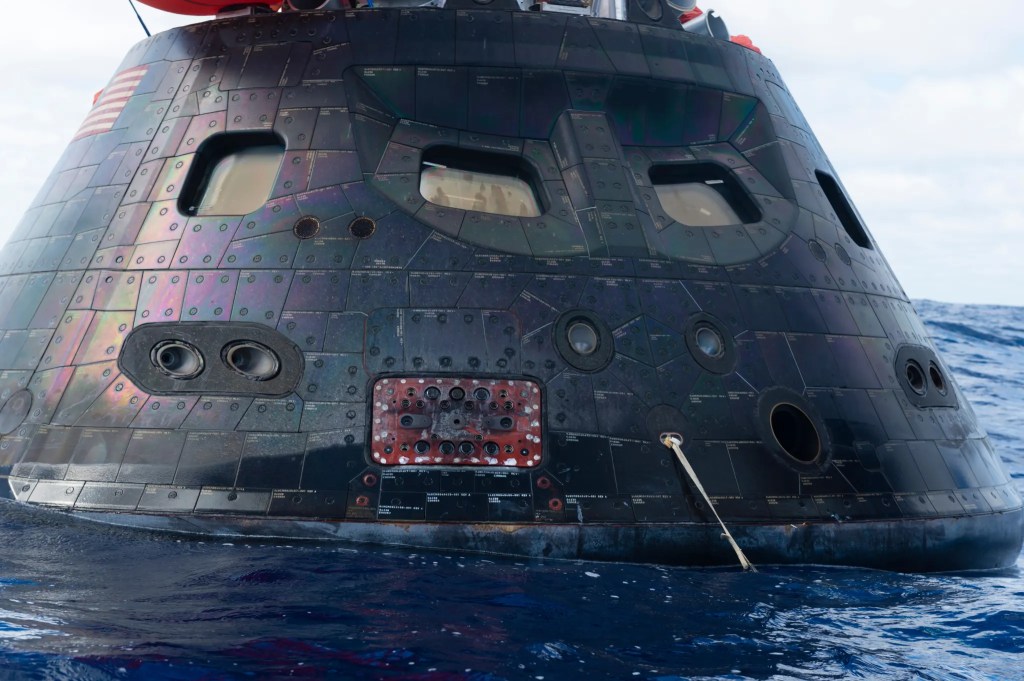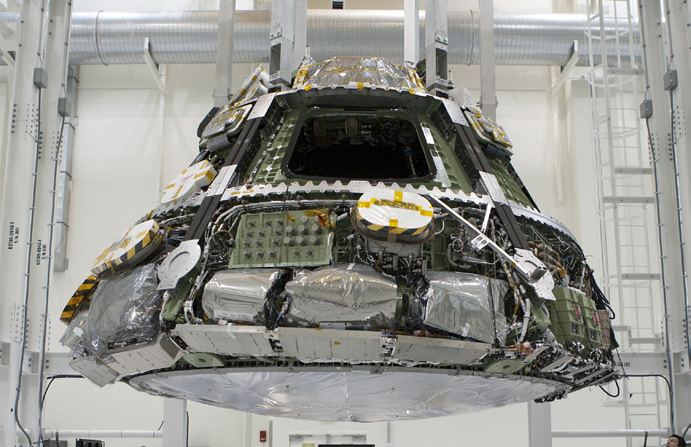Manufacturing, Assembly & Integration
Spacecraft assembly and integration involve intricate processes that construct and combine various components to create a fully operational spacecraft. This crucial phase ensures that all elements, from structural components to electronic systems, seamlessly converge and operate within the integrated spacecraft. At the Johnson Space Center, we offer advanced facilities and expertise ready to support almost every aspect of spacecraft development. Staffed by expert technicians and engineers, our facilities include cutting-edge clean rooms, fully equipped high bays, onsite manufacturing, and spacecraft testing facilities that provide the ideal environment for spacecraft assembly and seamless integration. Explore the relevant capabilities below, as we invite you to join us in the exciting journey of space exploration at the forefront of discovery.
Manufacturing
JSC Central Manufacturing
JSC Central Manufacturing provides the capability to produce flight hardware, ground support hardware, and prototype hardware. Expertise is available in precision machining, sheet metal fabrication, welding, coatings, soft goods, heat treating, models & plastics, and assembly.
Fabrication and Assembly
- Heavy machine manufacturing and assembly
- Heat-treating
- Metal finishing
- Painting
- Modeling
- Nonmetallic & composites
- Soft goods/fabrics
- Measurement, inspection, and production management
Machinery
- 3, 4 and 5 axis milling machines
- Vertical mills
- Horizontal mill and a 5-axis Gantry mill
- Computer Numerical Control (CNC) lathes
- Wire Electrical Discharge Machining (Wire EDM), RAM Electrical Discharge Machining (RAM EDM)
- Water knife, press brake, Hem saw large capacity
- Cincinnati power squaring sheer
- TIG, MIG stick and orbital welding
- Surface preparation and paint booth
- Precision measuring via coordinate measuring machine (CMM)
- Ovens, autoclave
- Thermwood routers
Additive Manufacturing Laboratory
The Additive Manufacturing Laboratory (AML) is a facility supporting the fabrication of plastic and metal components. It utilizes advanced 3D printing methods with additional support equipment.
- Fused Deposition Modeling (FDM) extrusion systems, also known as Fused Filament Fabrication, are the primary 3D printing systems
- Plastics available for FDM parts are: Ultem 9085, ABS, ABS-M30, ASA, PC, PC-ABS, Nylon, ABSi, and PLA
- Polyjet Plastic Parts are also possible in a wide range of colors and flexible materials
- Metal 3D printing materials are available in 17-4 PH stainless steel, 625 Inconel, and Copper
- Machines in service: Stratasys Fortus eV, Stratasys Fortus 400mc , Stratasys F770, Stratasys Objet J55, Mark Forged X7, Mark Forged Metal X, Mark Forged Sinter II , Mark Forged Mark II, Rize One, and Flash Fuse Enabled AON-M printer by Essentium
- Support equipment available: Solvent clean station, high pressure washer, UV light curing box, hand tools, bake out oven, power tools, and drill press
White Sands Test Facility (WSTF) Manufacturing
White Sands Test Facility (WSTF) manufacturing specializes in prototyping and production of parts for in-flight usage and ground equipment. It combines high-end Computer Numerical Control (CNC) precision machining and welding with experienced personnel and advanced inspection techniques and equipment to deliver high quality components.
WSTF’s 18,000 ft² shop houses conventional shop (lathes, mills, drill presses), Computer Numerical Control (CNC) lathes and mills, Electrical Discharge Machining (EDM), welding, and sheet metal equipment.
Equipment
- Conventional shop equipment, including nine lathes and six mills
- Computer Numerical Control (CNC) capability, including three turning centers (lathes) and four machining centers (mills) and an Electrical Discharge Machine (EDM)
- Shop PRO CAD/CAM interface between CNC machines and personal computers
- Welding machines, including four shop machines, five portable machines (two tungsten inert gas), plasma cutter, arc, two metal inert gas
Capabilities
- Conventional and computer-aided machining, including turning up to 26 in. (66 cm), milling up to 40 in. (100 cm), drilling, boring, and reaming
- In-shop calibration program with control and inspection by certified quality assurance personnel
- Certified in-shop welding processes covering most ferrous and nonferrous applications, including carbon steel, stainless steel, Inconel, Monel, bimetallic, and aluminum
- Skilled in working with many ferrous and non-ferrous metals including stainless steel, aluminum, and brass
- Working with exotic metals like Monel, Inconel, Kovar, titanium, carbon, and alloy steels
- In-shop Certified Welding Inspector (CWI) inspection capabilities
- ASME-code equivalent fabrication
- ISO 9001 certified and AS 9100 compliant
- Precision sheet metal capabilities
- Wide variety of certified materials in stock
Clean Rooms
Precision Clean Room (JSC)
NASA JSC Class 1000 Precision Clean Room provides standard processes for cleaning materials used in critical space applications.
- Precision cleaning processes include visibly clean (VC), VC Ultraviolet, and VC Highly Sensitive
- Precision levels from 50 – 1000
- Particle count verification with deionized (DI) water or hydrofluoroethers (HFE) rinse
- Rinse solution is strained and filtered for particle count and size
- Ovens dry parts before bagging and tagging
White Sands Test Facility (WSTF) Cleanrooms
White Sands Test Facility (WSTF) maintains several clean rooms and large areas that can be used for test article assembly and checkout. These areas range from Class 100 clean rooms and flow benches to large size assembly areas.
ISO 5 (Class 100) Clean Rooms
- A 20 x 24 x 8 ft3 clean room with a 6 x 12 ft2 anteroom is used for processing flight hardware
- Precision cleaned hardware is processed in a 26 x 24 x 8 ft3 clean room
- Components are reassembled, and function tested in a 14 x 21 x 8 ft3 clean room
- WSTF uses several Class 100 laminar flow benches, each equipped with varying levels of facility supply including nitrogen, helium, oxygen, and compressed air
ISO 7 (Class 10,000) Clean Rooms
- A 20 x 20 x 15 ft3 assembly room is equipped with facility 3000-psi nitrogen and helium with the ability to supply up to 9000 psi
- The Spaceflight Component Services Area has several different soft-walled ISO 7 (Class 10,000) work areas currently configured for decontaminating hardware with some limited functional and leak testing capabilities
- A 15 x 15 ft soft-walled structure used to provide a local class 10,000 work environment
- All clean room garments are processed in a soft-walled Class 10,000 work area
Available Clean Rooms, Test & Assembly Areas, & Special Equipment
- One ISO 5 (Class 100) & four ISO 7 (Class 10,000) clean rooms (hard & soft wall) ranging from 100 to 600 ft
- Six Class 100 laminar flow bench work areas
- Building 416 is an environmentally controlled 60 x 40 x 22 ft facility with a moveable 16 x 16 x 10 ft Class 100,000 soft walled work area
- Various inert gas (gaseous nitrogen – GN2, gaseous helium – GHe) & fluid test systems (deionized water) available
- Borescope and microscope inspection equipment with digital recording capability
- Fabrication & Assembly Area (Test Articles, Servicing Equipment, Test Panels)
- High-bay shop area – 1500 ft2 with 20-ft W x 45-ft H access door & overall work height
- Shop-air, breathing air, GN2, GHe, and deionized water supplies available
- 15-ton overhead bridge crane and 1/4-ton motorized Coffing crane
Precision Cleaning (WSTF)
White Sands Test Facility (WSTF) provides contamination control support to its customers through cleaning and cleanliness verification, personal protection equipment, and clean room garments maintenance. The Contamination Control Laboratory provides standard processes for cleaning materials used in critical space applications and performs special processes including pickling and passivation.
The Contamination Control Laboratory at White Sands Test Facility (WSTF) provides standard processes for cleaning materials used in critical space applications. Some of the construction materials are titanium, stainless steel, aluminum, brass, and various plastics, and elastomers. Cleanliness is verified using a variety of fluids, including isopropyl alcohol, ultra-pure water, and hydrofluoro ether (HFE 7100) for a multitude of systems including oxygen, hypergolics, and nitrogen. Precision cleaned items are packaged in clean nylon or Teflon® bags, with an outer bag of polyethylene to protect the cleanliness of the hardware until ready for use. Special processes including pickling and passivation are also performed in the Contamination Control Laboratory. Among items processed through this laboratory are man-rated breathing apparatus for space flight, lubrication systems on large vacuum pumps, large oxygen tanks, and tube-bank trailers. Personal protective equipment (PPE) at WSTF is a critical part of testing aerospace hardware and systems. We test, maintain, and certify self-contained breathing apparatus (SCBA), totally encapsulating suits (TES) and standard splash gear. WSTF operates a clean room garment processing facility that cleans, samples, and packages uniforms for use in critical clean areas.
Refurbishment & Processing
Spaceflight Component Processing
White Sands Test Facility (WSTF) Spaceflight Component Services Group provides support for flight, flight-like, and critical test components through fabrication, repair, refurbishment, acceptance testing, failure analysis, and decontamination processes.
Component/Test Article Decontamination Areas
- Two laboratory fume extraction hoods (one for fuel propellant & one for oxidizer propellant contaminated hardware)
- Three ISO 7 (Class 10,000) decontamination clean rooms with propellant vapor fume extractor systems for handling fuel & oxidizer propellant contaminated hardware
- Heated GN2 purge/drying system
- Deionized Water supply systems
- Portable deionized water pump/circulation system
- Portable process water catch/pump transfer system
Component Repair, Refurbishment, & Acceptance Testing
- Technical expertise in the processing of development, qualification, and flight hardware
- Personnel with hands-on experience in the processing (decontamination, failure analysis, disassembly, reassembly, repair, acceptance testing) of flight hardware ranging from Space Shuttle and International Space Station to other commercial vendor hardware
- Mono and hypergolic propellant & oxygen system expertise
- Test system design, fabrication, and operation
- Experience in the development of detailed processing & test procedures
- Borescope and microscope inspection equipment with digital recording capability
Flight Hardware Parts & Component Fabrication/Manufacturing
- Certified to manufacture flight hardware
- Foreign Object Debris (FOD) awareness training
- Technicians certified to IPC J-STD-001FS Space Applications Electronic Hardware Addendum to IPC J-STD-001F Requirements for Soldered Electrical and Electronic Assemblies
- NASA Standard STD-8739.1, Workmanship Standard for Polymeric Application on Electronic Assemblies
- NASA Standard STD-8739.4, Workmanship Standard for Crimping, Interconnecting Cables, Harnesses, and Wiring
- NFPA 70 National Electrical Code & NFPA 70E Standard for Electrical Safety in the Workplace
Bonded Storage Facility
- Procedures & systems in place for the controlled storage of critical hardware
Valve Repair and Refurbishment
White Sands Test Facility (WSTF) provides fluid component support to its customers through valve refurbishment, repair, and maintenance. Services provided follow the American National Standards Institute (ANSI) National Board Inspection Code (NBIC)/NB-23.
- Component Services workforce: disassembly, cleaning, maintenance, reassembly, refurbishment, and testing of pressure relief and pressure safety valves in compliance with the American National Standards Institute (ANSI) National Board Inspection Code (NBIC)/NB-23
- Operations: hardware precision cleaning, component assembly, and component calibration. With a full-service clean room and an American Society of Mechanical Engineers/ National Board Inspection Code (ASME/NBIC) certified Valve Repair (VR) Facility, this organization has extensive cleaning and refurbishing experience with numerous valve configurations, metal types, and elastomerics
- Unique VR facility: relief valve repairs and flow tests are performed in an oxygen-clean environment to service ASME code relief devices for use in oxygen systems
- The Fluid Components Laboratory: services on fluid components and systems, including manual valves, chemical pumps, compressors, vacuum pumps, and flight compressors on the ISS
- Refurbish and repair valves for oil, gas, chemical, propellant, and fuel use, as well as for components in liquid oxygen systems
- Reassembly and functional testing, cleanliness is maintained using a clean, Class 10,000 environment



































